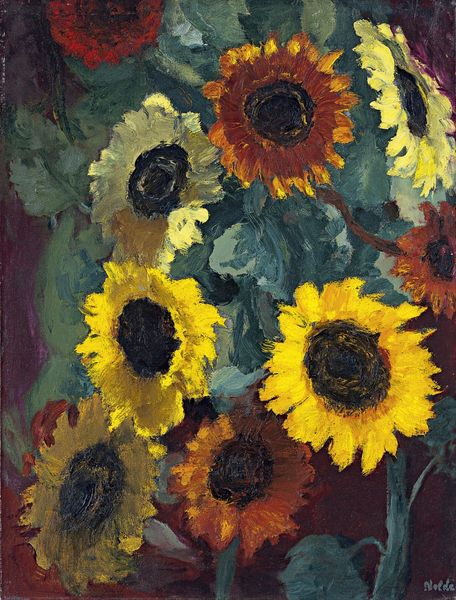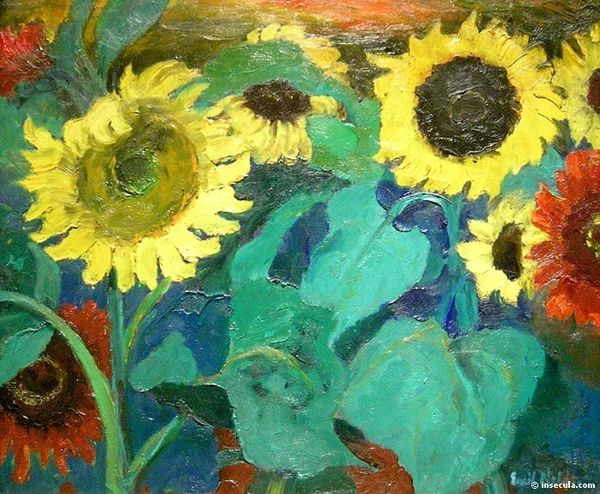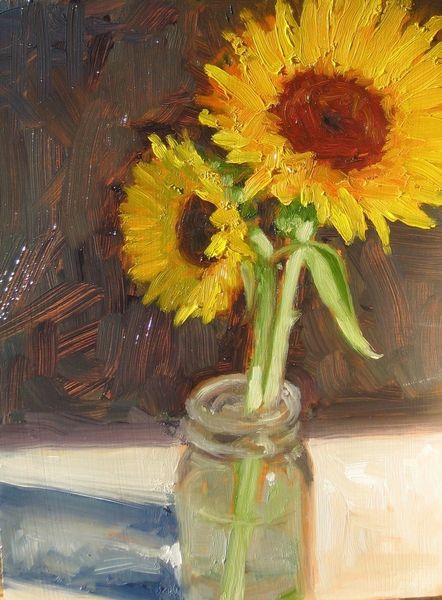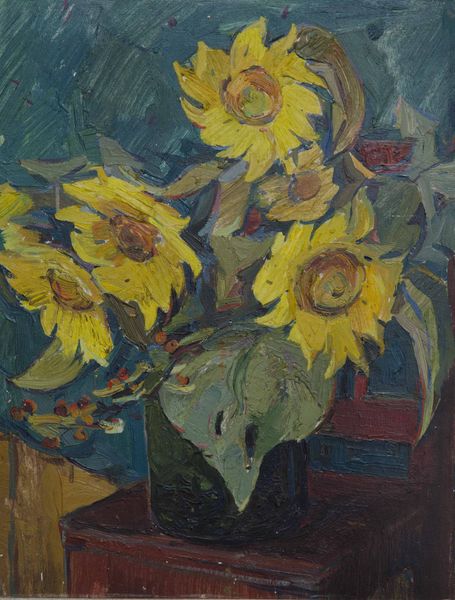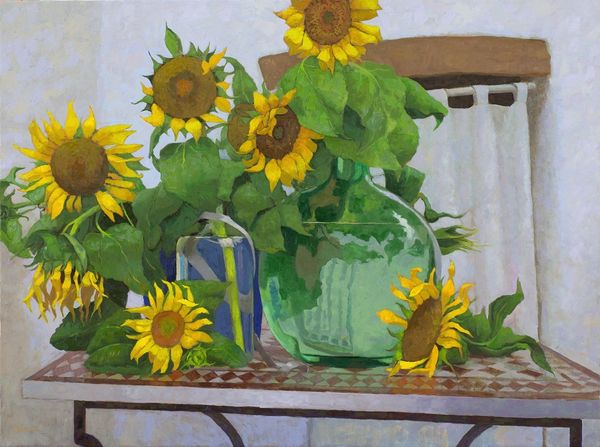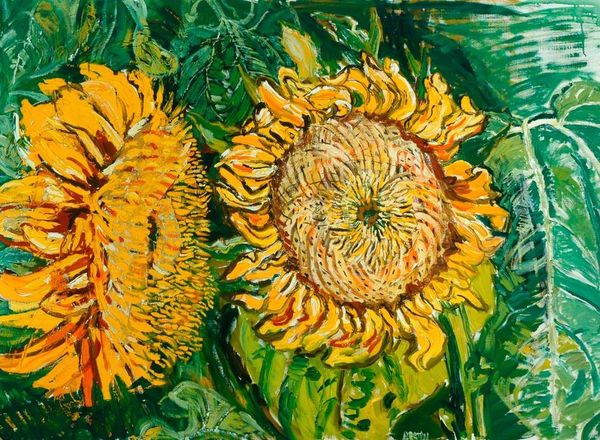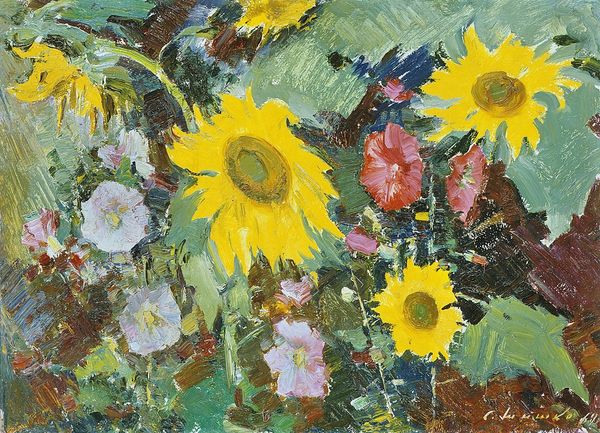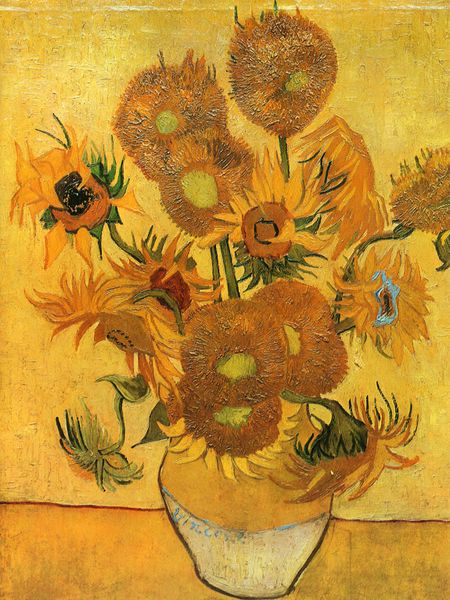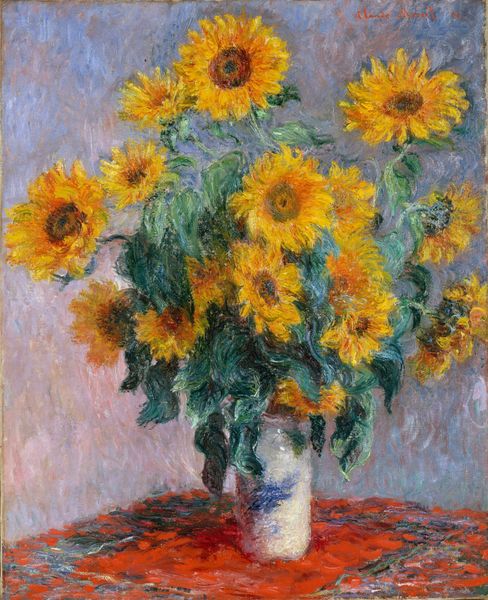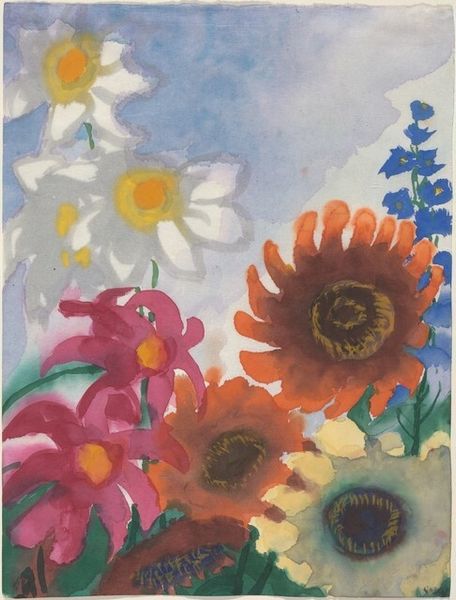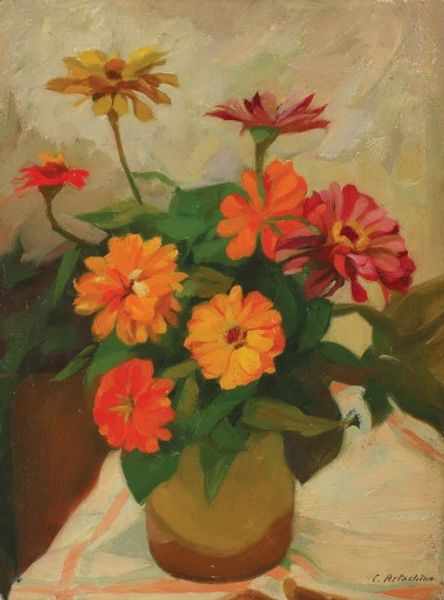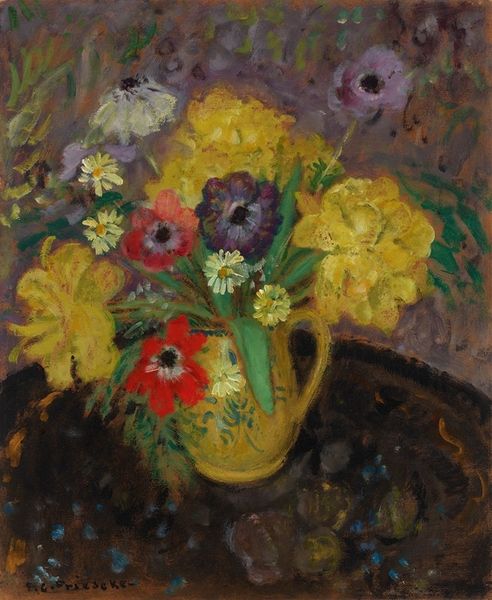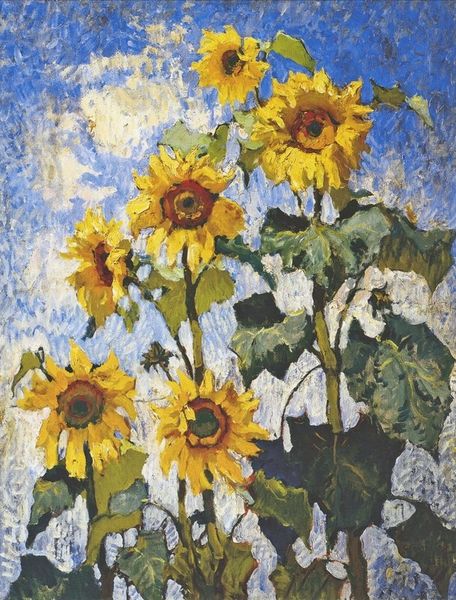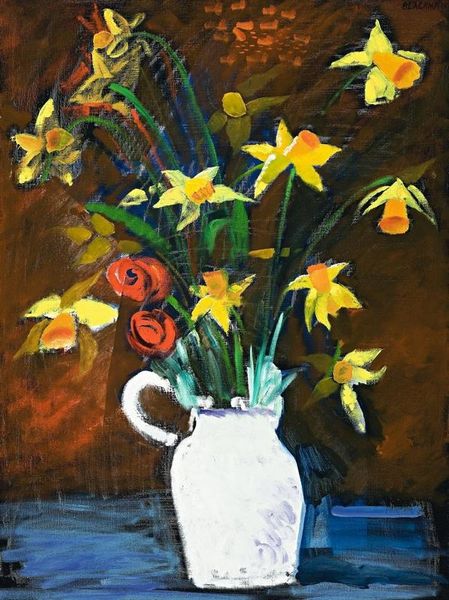
Copyright: Maggie Laubser,Fair Use
Editor: Here we have Maggie Laubser’s “Sunflowers in Blue Vase” from 1940, painted in oil. The vibrant yellows immediately grab your attention, contrasted with the deep blues of the vase. It feels like such a cheerful and domestic scene. What stands out to you? Curator: Sunflowers, throughout history, have been potent symbols. They inherently represent adoration, warmth, and longevity. But in a South African context, during the mid-20th century, Laubser's choice feels layered with meaning. Don't you think the vibrancy defies the gloom of World War II? The Expressionistic style enhances this defiant joy, but what are your thoughts about that "naive art" tag in the metadata? Editor: I can see that! In a way, I think that term "naive art" downplays her technical choices here. It's less about being untrained and more about embracing a particular kind of raw emotion, right? Like rejecting academic stuffiness. Curator: Precisely. Think of the color choices as emotional prompts rather than accurate botanical renderings. Why those intense blues? Perhaps the blue recalls a sense of depth, like a still, reflective pool in the summertime. Editor: So, the vase and the flowers could then almost be reflecting feelings rather than just objects? Curator: Absolutely! We look at sunflowers and see light. In this picture, Laubser seems to have captured more than sunlight – she is showing us something more essential: joy. Does knowing the potential for symbol-laden art influence how you approach seeing artwork differently from now on? Editor: It totally does. Now I see that still lifes can be charged with so much symbolic potential; Laubser definitely imbued these flowers with an emotional presence. Curator: Indeed, looking deeper can reveal rich cultural memory and emotion residing within visual forms.
Comments
No comments
Be the first to comment and join the conversation on the ultimate creative platform.
